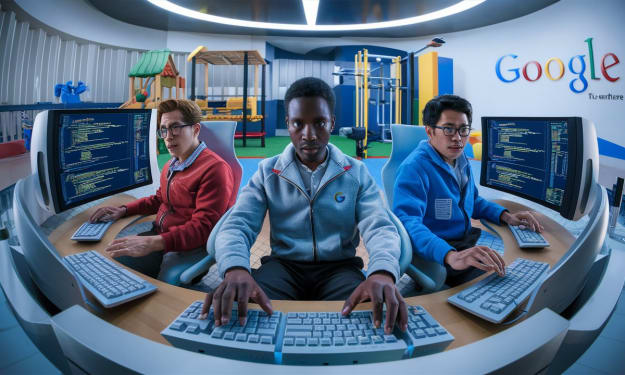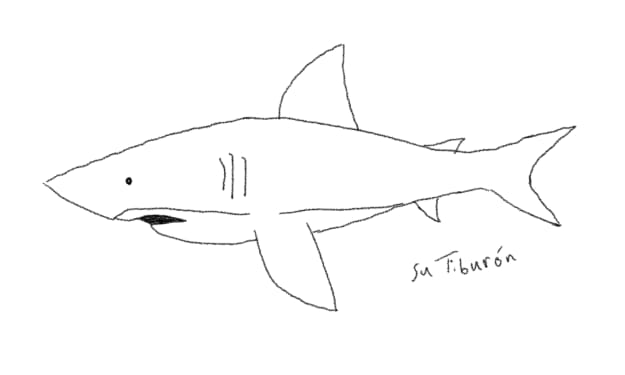Futurism and the Avant-Garde: Challenging Conventions and Shaping Modern Art
Examining the Radical Departure from Tradition and the Lasting Impact of Futurism on Contemporary Art and Culture

Futurism, an early 20th-century avant-garde movement, was characterized by its radical departure from traditional artistic norms and its fervent embrace of modernity, technology, and progress. Initiated by Italian poet Filippo Tommaso Marinetti in 1909, futurism sought to revolutionize art by rejecting the past and celebrating the dynamic energy of contemporary life. This article examines how futurism challenged conventional artistic forms, its key principles, and its lasting impact on modern art.
The Birth of Futurism
Futurism emerged in a period of significant social, political, and technological change. The early 20th century saw the rise of industrialization, urbanization, and new technological advancements that transformed everyday life. Against this backdrop, Marinetti published the Futurist Manifesto in Le Figaro on February 20, 1909, marking the official launch of the futurist movement. The manifesto called for a complete break from the past, advocating for a new artistic language that reflected the speed, dynamism, and innovation of the modern world (Smithsonian Magazine) (Khan Academy).
Key Principles of Futurism
Several core principles defined the futurist movement, each contributing to its revolutionary approach to art and culture.
Rejection of the Past: Futurists vehemently opposed traditional artistic conventions and institutions. They believed that museums, libraries, and academies perpetuated outdated values and hindered progress. The movement called for the destruction of these relics to make way for a new, modern culture that embraced innovation and change (Smithsonian Magazine) (Khan Academy).
Celebration of Technology and Modernity: Futurists glorified technological advancements and industrial achievements. They saw machines, automobiles, airplanes, and other technological innovations as symbols of human ingenuity and progress. This enthusiasm for technology influenced their artistic practices, leading to works that depicted the mechanical and industrial aspects of contemporary life (Smithsonian Magazine) (Khan Academy).
Emphasis on Speed and Movement: The concept of dynamism, or the representation of movement and energy, was central to futurist art. Futurists sought to capture the essence of speed and motion in their works, reflecting the fast-paced nature of modern life. This emphasis on movement was evident in both visual and literary works produced by futurist artists (Smithsonian Magazine) (Khan Academy).
Provocation and Innovation: Futurists aimed to provoke and challenge their audience. They sought to shock and disrupt conventional sensibilities, using aggressive and confrontational techniques to stimulate new ways of thinking about art and society. This provocative approach was intended to break down the complacency of the bourgeoisie and encourage a radical rethinking of cultural norms (Smithsonian Magazine) (Khan Academy).
Impact on Visual Arts
Futurism had a profound impact on the visual arts, leading to the creation of dynamic and innovative works that broke with traditional forms and techniques.
Painting: Futurist painters, including Umberto Boccioni, Giacomo Balla, and Gino Severini, used bold colors, fragmented forms, and dynamic compositions to convey the energy and movement of modern life. Boccioni’s The City Rises and Balla’s Dynamism of a Dog on a Leash are iconic examples that illustrate the futurist fascination with speed and mechanization (Khan Academy) (Routledge Encyclopedia).
Sculpture: Futurist sculptors experimented with new materials and forms to create works that embodied the principles of dynamism and movement. Boccioni’s sculpture Unique Forms of Continuity in Space is a seminal piece that captures the essence of speed and the human figure in motion, reflecting the movement’s emphasis on the mechanical and the dynamic (Khan Academy) (Routledge Encyclopedia).
Photography and Film: Futurists were among the first to embrace new media, such as photography and film, to explore the possibilities of movement and time. Artists like Anton Giulio Bragaglia experimented with photodynamism, a technique that used long exposure times to capture multiple stages of movement in a single image. This approach aligned with the futurist interest in depicting motion and dynamism (Khan Academy) (Routledge Encyclopedia).
Influence on Literature and Poetry
Futurism’s innovative spirit extended to literature and poetry, where writers experimented with new forms and themes to reflect the movement’s ideals.
Poetry: Futurist poets, including Marinetti, introduced techniques such as free verse, onomatopoeia, and typographical innovation to capture the sounds and rhythms of modern life. Marinetti’s concept of parole in libertà (words in freedom) aimed to liberate words from traditional syntax and structure, creating a more dynamic and expressive form of poetry (Khan Academy) (Routledge Encyclopedia).
Narrative Fiction: Futurist writers also experimented with narrative structures, rejecting linear storytelling in favor of fragmented, multi-perspective narratives. These innovations were evident in the works of writers like Ardengo Soffici and F.T. Marinetti, who explored themes of technology, speed, and transformation in their prose (Khan Academy) (Routledge Encyclopedia).
Performance and Theater
Futurism brought significant changes to performance and theater, incorporating elements of the machine age into their productions and challenging traditional theatrical conventions.
Synthetic Theater: Futurist theater, or synthetic theater, sought to create immersive, dynamic experiences that reflected the movement’s celebration of speed and technology. Performances often included rapid scene changes, multimedia elements, and mechanical devices to create a sense of motion and energy. This approach aimed to break down the barriers between audience and performer, creating a more engaging and immediate experience (Khan Academy) (Routledge Encyclopedia).
Performance Art: Futurist performance art embraced the themes of mechanization and industrialization, with artists creating works that incorporated machinery and technology. These performances often sought to provoke and challenge the audience, reflecting the movement’s desire to disrupt traditional forms and engage with modernity in new and innovative ways (Khan Academy) (Routledge Encyclopedia).
The Enduring Legacy of Futurism
Although the futurist movement itself was relatively short-lived, its influence continues to resonate in contemporary art and culture. The movement’s celebration of the machine age and its innovative approach to art and technology have left a lasting legacy.
Contemporary Art: Elements of futurist aesthetics, such as the emphasis on movement, abstraction, and the integration of technology, can be seen in the works of contemporary artists. Digital art, interactive installations, and multimedia works reflect the futurist vision of a technologically integrated artistic experience (Khan Academy) (Routledge Encyclopedia).
Design and Architecture: Futurist principles have also influenced contemporary design and architecture. The use of bold, geometric forms, dynamic layouts, and innovative materials in modern architecture and design can be traced back to the visionary ideas of futurist architects like Antonio Sant'Elia. Concepts such as smart cities and sustainable infrastructure reflect the futurist vision of a technologically advanced and efficient urban environment (Khan Academy) (Routledge Encyclopedia).
Cultural Narratives: Futurism’s exploration of the relationship between humanity and technology continues to inform cultural narratives in literature, film, and other media. Science fiction, in particular, often grapples with themes of technological advancement and its impact on society, echoing the ongoing relevance of futurist ideas (Khan Academy) (Routledge Encyclopedia).
Conclusion
Futurism’s radical departure from traditional artistic norms and its fervent embrace of modernity, technology, and progress marked a significant shift in the trajectory of modern art and culture. By challenging conventions and celebrating the dynamism of the machine age, futurists sought to create a new, dynamic aesthetic that reflected the energy and potential of the modern world. While the movement itself eventually declined, its impact and legacy continue to shape contemporary art, design, and cultural narratives, reminding us of the enduring power of visionary ideas to transform society and inspire new ways of thinking about the future.
About the Creator
Enjoyed the story? Support the Creator.
Subscribe for free to receive all their stories in your feed.






Comments (1)
Great stuff, well done.